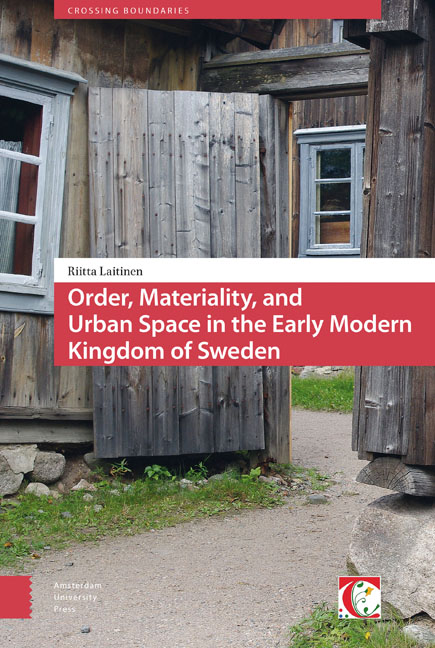Book contents
Summary
The Town
Although the order of and in Turku urban space was not specifically characterized by an adversarial relationship between the authorities and the local community, the examination of the toll fence and the various practices relating to crossing it shows that there was a clear divergence between the thinking of the local people and that of high officials. It has become clear that one person's or group's order (the local order fashioned by the townspeople) was someone else's disorder (the Crown and the local authorities, and particularly, in many instances, Governor General Per Brahe).
The fashioning of local order in various spheres of life has become visible in the examination of practices connected with the material boundary of the town. While the material restrictions of the toll fence and the town gates – generated by statutes – were unavoidable and significant, and created very clear and visible spatial rules, they were not straightforward. Townspeople had ways of organizing urban life and making their own rules in relation to the material boundary. Fluidity was a key aspect of urban order for the burghers as well as other town dwellers. This can be seen, for example, in local practices of paying toll fees or lodging vagrants. In these practices that created local spatial rules, the official order was neither rejected nor resisted; it was moulded.
The relationship to order varied considerably between different categories of townspeople, that is, burghers, servants, workers, wives and widows. The local order was not uniform. First of all, the town was governed by a corporation of burghers that created order for itself with its own benefit in mind (and not necessarily that of all the townspeople). This administrative order of the town was closely related to the desired order of the higher authorities, but these two diverged, for example, in dealing with the burghers’ need for mobility – a necessity for the burghers, but undesirable from the perspective of the Crown. Interestingly, the town as a corporation also looked particularly to its own members to keep the desired order, as can be seen from the way that ‘loose people’ were dealt with in court. Vagrants and immoral persons were most definitely unwanted and to be expelled, but rather than targeting them in the court, the burghers were made responsible.
- Type
- Chapter
- Information
- Publisher: Amsterdam University PressPrint publication year: 2017



